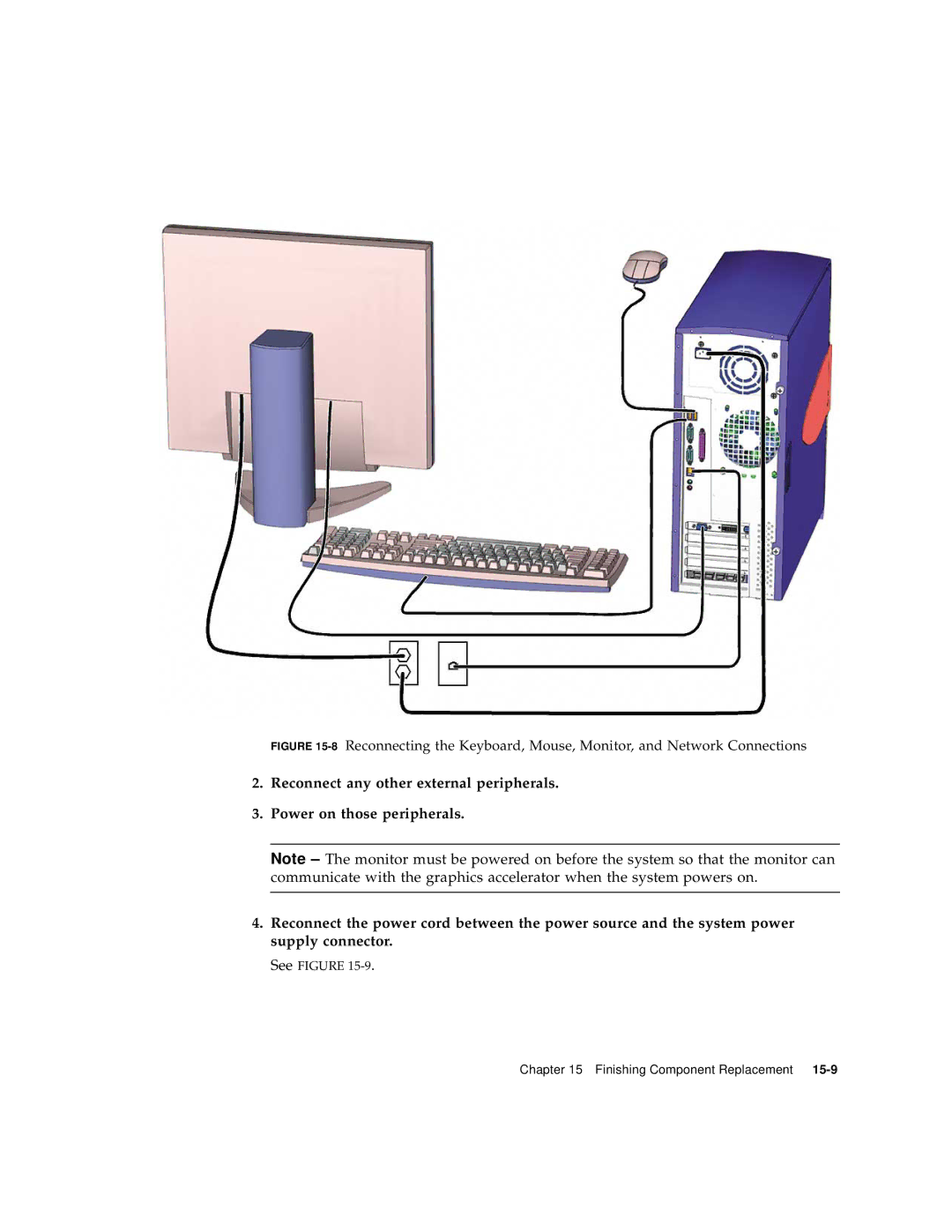1500 specifications
The Sun Microsystems 1500 is a notable entry in the realm of workstations and server technologies, particularly during the 1990s. Renowned for its robust architecture and innovative features, the Sun 1500 played a significant role in Sun’s push towards high-performance computing.At the heart of the Sun 1500 is its UltraSPARC architecture, a scalable and powerful microprocessor design that significantly enhanced computing performance compared to its predecessors. The UltraSPARC chips provided a solid foundation for running demanding applications, especially those related to graphics, engineering, and scientific computing.
One of the standout features of the Sun 1500 is its support for symmetric multiprocessing (SMP), which allows multiple processors to work together seamlessly. This capability enables enhanced performance for multi-threaded applications, making the Sun 1500 particularly appealing for environments requiring high reliability and performance. The ability to scale performance by adding additional processors was a significant advantage for many users.
The Sun 1500 also included advanced memory management features, supporting large memory configurations that were crucial for memory-intensive applications. With options for multiple gigabytes of RAM, users could run large databases and complex simulations without the performance degradation that often accompanied lower memory capacities.
In terms of storage, the Sun 1500 offered a variety of options, including SCSI and Fibre Channel connectivity, allowing for high-speed data transfer and integration with various storage systems. This versatility meant it could be tailored to specific enterprise needs, whether for data-intensive applications or virtual environments.
Networking capabilities were equally impressive. The system supported a range of networking protocols and had built-in support for Ethernet, making it easy to connect to local area networks and integrate into existing IT infrastructures. This connectivity was crucial in business settings where collaboration and data sharing were paramount.
Additionally, the Sun 1500 ran on the Solaris operating system, known for its stability and security. Solaris offered a rich set of development tools and libraries that appealed to software developers and system administrators alike.
Overall, the Sun Microsystems 1500 was a powerful workstation that combined advanced processing capabilities, extensive memory support, flexible storage options, and reliable networking features. Its influence and versatility made it a preferred choice for enterprises and tech-savvy individuals looking to harness the power of high-performance computing during its era. The legacy of the Sun 1500 can still be seen in modern computing architectures that prioritize scale and performance.

